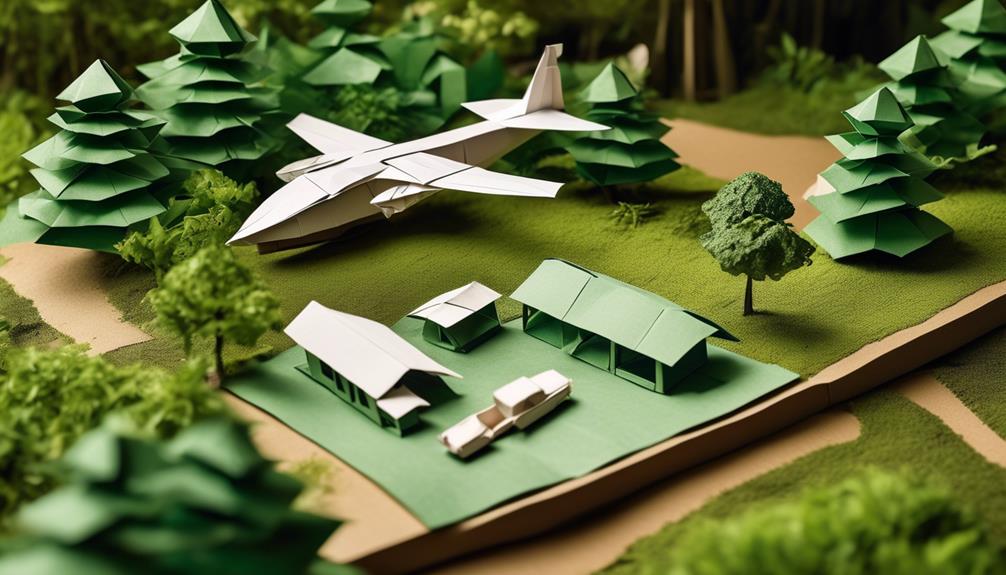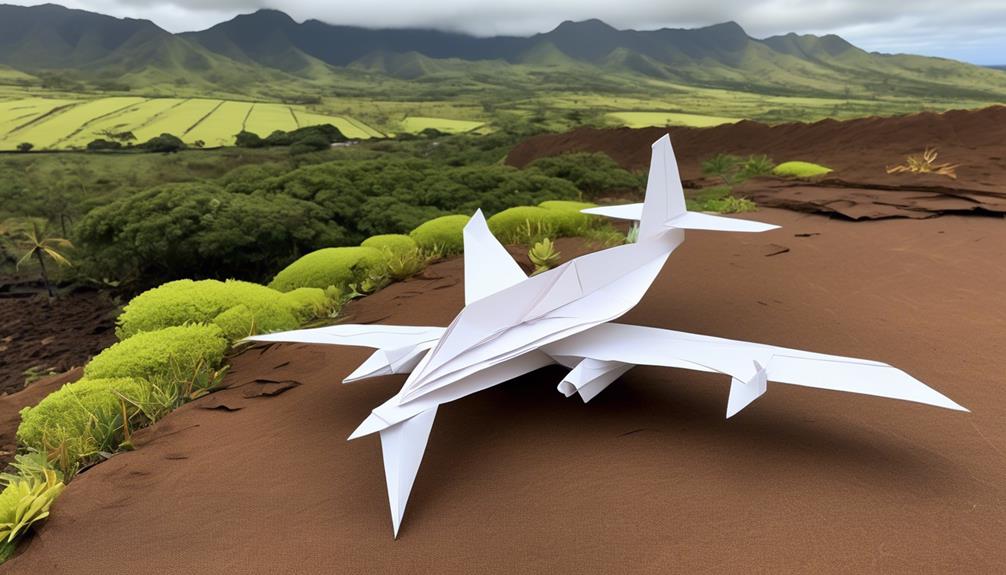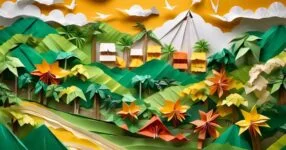Takeaways:
- Natural beauty and isolation: Molokai offers untouched landscapes and seclusion, providing a peaceful atmosphere and the opportunity to live in harmony with nature.
- Community and culture: The close-knit population and strong personal relationships create an intimate and welcoming atmosphere. The island celebrates and preserves Hawaiian culture through events and festivals.
- Cost of living: Molokai offers a lower cost of living compared to larger cities, allowing residents to stretch their budget further without compromising quality of life. However, employment opportunities may be limited.
- Limited access to services: Molokai has limited access to essential services, such as specialized healthcare and urban amenities. The island’s small population and isolated location impact the availability of goods and services.
| Pros of Living on Molokai | Cons of Living on Molokai |
|---|---|
| Strong Community Bonds | Limited Career Opportunities |
| Natural Beauty and Serenity | High Cost of Living Relative to Income |
| Rich Hawaiian Culture | Limited Access to Healthcare and Specialized Services |
| Outdoor Recreational Opportunities | Transportation Challenges |
| Small Town Charm | Limited Educational Opportunities |
| Affordable Living Compared to Other Hawaiian Islands | Isolation from Urban Amenities |
| Sustainable Agriculture | Potential for Xenophobia |
| Peaceful and Quiet Environment | Vulnerability to Natural Disasters |
| Preservation of Hawaiian Traditions | Limited Technological Infrastructure |
| Community-Driven Initiatives | Dependency on Imports |
Pros of Living on Molokai
- Strong Community Bonds: The small population of Molokai fosters a tight-knit community where people know and care for each other. Residents often form strong connections with their neighbors, creating a supportive and inclusive environment. This sense of belonging is a significant advantage for those seeking a close-knit community lifestyle.
- Natural Beauty and Serenity: Molokai is renowned for its stunning natural landscapes, including breathtaking sea cliffs, lush forests, and pristine beaches. This natural beauty offers residents a serene and picturesque living environment, making it an ideal place for nature lovers and those seeking tranquility.
- Rich Hawaiian Culture: The island is deeply rooted in Hawaiian traditions and culture. Residents have the opportunity to immerse themselves in a rich cultural heritage through various events and historical sites, providing a unique living experience that is deeply connected to the island’s history and traditions.
- Outdoor Recreational Opportunities: With its diverse landscapes, Molokai offers a plethora of outdoor activities such as hiking, fishing, surfing, and snorkeling. This makes it an ideal location for adventure enthusiasts and those who enjoy an active outdoor lifestyle.
- Small Town Charm: Molokai’s small population contributes to a cozy, small-town atmosphere. This lifestyle is perfect for those who prefer a quieter, more laid-back way of life, away from the hustle and bustle of larger cities.
- Affordable Living Compared to Other Hawaiian Islands: While the cost of living is higher than some mainland locations, it is relatively lower compared to other Hawaiian Islands. This makes Molokai a more affordable option for those wanting to live in Hawaii.
- Sustainable Agriculture: The island’s focus on sustainable farming practices means access to fresh, locally-grown produce. This not only supports a healthier lifestyle but also promotes environmental sustainability.
- Peaceful and Quiet Environment: Molokai is less commercialized and crowded than other tourist-heavy Hawaiian Islands. This tranquility appeals to those seeking a peaceful and undisturbed living environment.
- Preservation of Hawaiian Traditions: Molokai places a strong emphasis on preserving Hawaiian traditions and values. Residents can experience and participate in authentic Hawaiian customs and practices, enriching their understanding of the local culture.
- Community-Driven Initiatives: The close-knit community often leads to collaborative efforts in preserving the island’s natural beauty and cultural heritage. This communal approach fosters a sense of purpose and engagement among residents.
Cons of Living on Molokai
- Limited Career Opportunities: The island’s small and rural nature results in fewer job opportunities, especially in specialized fields. This can be a significant drawback for individuals seeking career growth or those in niche professions.
- High Cost of Living Relative to Income: Despite being lower than some other Hawaiian islands, the cost of living on Molokai is relatively high when compared to the average local income. This economic disparity can pose financial challenges for residents.
- Limited Access to Healthcare and Specialized Services: The island has restricted access to specialized healthcare and other essential services. Residents may need to travel to other islands for specific medical needs, which can be inconvenient and costly.
- Transportation Challenges: With no public transportation system and limited connectivity to other places, getting around Molokai and traveling to and from the island can be difficult. This can be particularly challenging for those without personal transportation.
- Limited Educational Opportunities: The island’s small size and population limit the availability and variety of educational institutions, which may be a concern for families with children or individuals seeking higher education.
- Isolation from Urban Amenities: Molokai’s rural setting means less access to urban amenities such as diverse shopping options, entertainment, and dining choices. This can be a downside for those accustomed to urban living.
- Potential for Xenophobia: Some residents, particularly newcomers, might experience xenophobic attitudes from certain locals. This can be challenging for those looking to integrate into the community.
- Vulnerability to Natural Disasters: Like other Hawaiian Islands, Molokai is susceptible to natural disasters such as hurricanes and tsunamis, which can be a concern for safety and property.
- Limited Technological Infrastructure: While there is decent cell service and free WiFi in certain areas, the overall technological infrastructure on the island may be lacking compared to more urbanized locations. This can be a disadvantage in today’s digitally connected world.
- Dependency on Imports: Being an island, Molokai relies heavily on imported goods, which can lead to higher prices and limited availability of certain products. This reliance can also be affected by external factors like shipping delays or global events.
Natural Beauty and Isolation
Molokai’s untouched landscapes offer residents a rare opportunity to experience the island’s breathtaking natural beauty and tranquil isolation on a daily basis. Renowned for its stunning beaches, verdant forests, cascading waterfalls, and majestic mountains, Molokai is a haven for those who wish to immerse themselves in nature. The island’s seclusion from metropolitan noise and pace not only preserves its pristine environment but also fosters a peaceful atmosphere that is increasingly difficult to find elsewhere.
The isolation, while contributing to the serenity and unspoiled charm, provides residents with the unique chance to live in close harmony with the natural world. It is an environment that supports a tranquil lifestyle, encouraging relaxation and mindfulness amidst the island’s scenic wonders. Furthermore, the lack of urban development and the consequent low levels of pollution ensure that the air is clean, the skies are clear, and the natural habitats are well-protected.
Molokai’s natural splendor and seclusion offer an idyllic setting that appeals to those seeking a quiet, pastoral life. The island’s environment is a sanctuary for individuals desiring a retreat from the clamor of modern civilization, presenting a lifestyle that prioritizes simplicity, community, and an intimate connection with nature.
Community and Culture

The close-knit nature of Molokai’s population nurtures a robust sense of community and belonging, deeply rooted in the island’s rich Hawaiian traditions and cultural practices. This sense of togetherness is a distinctive feature of Molokai, where the social fabric is woven tightly, and personal relationships tend to be strong and supportive. Here, it is common for residents to know each other by name, creating an intimate atmosphere that can be particularly comforting for those seeking a tight-knit community.
Molokai offers residents a unique opportunity to immerse themselves in the history of Hawaiian culture, which is celebrated and preserved with great reverence. Cultural events and festivals provide avenues for participation and education, allowing newcomers and natives alike to engage with the island’s heritage. These experiences contribute to a rare and profound sense of cultural richness that many larger cities cannot replicate.
However, this closeness also means that privacy can be limited, and newcomers may find it challenging to integrate into the pre-established social circles. Despite this, many find the welcoming spirit and cultural authenticity of the Molokai community to be a compelling reason to call the island home.
Cost of Living
While the community and cultural benefits of Molokai are significant, its cost of living presents another appealing facet, generally offering more affordability compared to larger cities. This economic advantage allows residents to stretch their budget further, which can be particularly advantageous for those on a fixed income or individuals aiming to save money. The island’s lower cost of living does not come at the expense of a high quality of life, enabling residents to enjoy the essence of the island without breaking the bank.
However, it’s worth noting that the employment opportunities on Molokai are somewhat limited, especially for regular workers or office staff, which may necessitate a trade-off for those dependent on such jobs. The island’s economy is not as diverse or robust as that of a large city, meaning that while the cost of living is lower, so too might be the potential for employment in conventional sectors.
Despite this, for those who can secure a stable income, or for retirees, Molokai offers a cost-effective living option that can significantly enhance one’s lifestyle through its natural beauty and tight-knit community atmosphere.
Employment Opportunities
Despite its beauty and community spirit, Molokai faces a high unemployment rate, challenging residents to find innovative ways to sustain themselves. The scarcity of traditional employment opportunities has nudged the island’s workforce towards sectors that are in continual need, such as healthcare and education. Professionals like nurses, teachers, and veterinarians are in demand, providing some respite from the job scarcity. However, these opportunities are often limited and cannot absorb the entire job-seeking population.
For many Molokai residents, living off the land isn’t just a lifestyle choice but a necessity. Cultivating vegetables, hunting, and fishing are integral to both the culture and the economy of the island. This self-sufficient approach helps mitigate the lack of conventional employment but may not be suitable for everyone. Additionally, some locals juggle multiple part-time jobs to secure a stable income, underscoring the adaptability and resilience of the community.
The employment landscape on Molokai is particularly tough for regular workers or those seeking office-based positions, as such jobs are few and far between. This limitation prompts a portion of the workforce to either adapt to the available jobs or consider relocation. Understanding these dynamics is crucial for anyone contemplating a move to Molokai with the expectation of finding work.
Access to Services

Access to essential services presents a significant challenge for residents of Molokai. With only one hospital on the island, residents often require inter-island travel for specialized healthcare needs.
Additionally, the scarcity of public transportation and urban amenities underscores the island’s limited service infrastructure.
Limited Medical Facilities
Residents of Molokai face significant challenges due to the island’s sole hospital and the consequent necessity for inter-island travel to receive specialized medical care. The limited number of healthcare facilities presents particular difficulties for those with chronic or complex health conditions, who may find themselves frequently traveling to other islands for treatment. This not only adds a layer of inconvenience but also increases the healthcare costs and time spent away from work or family.
Additionally, the singular hospital structure can lead to longer wait times for medical services and a scarcity of resources to handle serious medical emergencies. For residents, this means that while Molokai offers a tranquil lifestyle, the trade-off includes limited immediate access to comprehensive healthcare services.
Essential Goods Availability
While healthcare presents its own set of challenges on Molokai, the island’s limitations extend to the availability of essential goods and services, impacting daily life for its residents.
The relatively small population and isolated location mean fewer job opportunities are available, primarily limited to agriculture and tourism sectors. This has a direct effect on the island’s economy and the services that can be supported.
Additionally, residents face a higher cost of living compared to more urban Hawaiian locales due to limited competition among retailers and the costs associated with transporting goods to the island.
Entertainment and urban amenities are sparse, reflecting Molokai’s remote, rural character.
Public transportation options are also limited, necessitating private vehicles for reliable mobility, which further contributes to the island’s accessibility challenges.
Outdoor Lifestyle

Molokai’s outdoor lifestyle is a significant draw for those seeking a connection with nature and an active way of life. The island’s abundant natural beauty offers a backdrop for a host of year-round outdoor activities, despite a scarcity of developed recreational facilities.
Residents and visitors can enjoy the simplicity and richness of engaging with the environment through various land and water-based pursuits.
Abundant Natural Beauty
Embraced by nature’s splendor, Molokai offers an outdoor lifestyle enriched by its stunning beaches, lush forests, cascading waterfalls, and majestic mountains. Residents and visitors alike find themselves in a haven that is perfect for a variety of outdoor activities, where the serene environment allows for both adventure and relaxation.
- Stunning Beaches: Molokai boasts some of the most beautiful and unspoiled beaches in Hawaii, ideal for sunbathing, swimming, and snorkeling.
- Lush Forests: The island’s forests offer a verdant retreat with trails for hiking and the opportunity to encounter unique wildlife.
- Cascading Waterfalls: Explorers can discover breathtaking waterfalls, providing a picturesque setting for picnics and photography.
- Majestic Mountains: The mountains of Molokai present challenging hikes with rewarding panoramic views.
Limited Recreational Facilities
Although Molokai is replete with natural wonders that cater to lovers of the great outdoors, the island’s recreational amenities are notably sparse, reflecting its commitment to a more traditional, nature-focused way of life.
Residents and visitors alike are drawn to the island’s pristine landscapes, which offer ample opportunities for hiking, fishing, and beach activities. However, the absence of urban-style entertainment such as theaters, malls, or amusement parks underscores the island’s limited access to modern recreational facilities.
This scarcity is not without its benefits, as it encourages a simpler, more nature-centric lifestyle. Moreover, the emphasis on outdoor activities promotes a more active and health-conscious way of living, which can be deeply rewarding for those seeking to disconnect from the fast-paced distractions of modern life.
Year-Round Outdoor Activities
Residents of Molokai benefit from a climate that allows for a diverse array of outdoor activities to be enjoyed throughout the year, fostering an active and healthful lifestyle amid the island’s breathtaking scenery. The temperate weather and stunning natural landscapes offer residents a unique opportunity to engage in various recreational pursuits with the added bonus of a strong community spirit and a relaxed pace of life.
Here are some of the outdoor activities that contribute to the allure of Molokai living:
- Hiking through lush trails and historical sites
- Fishing in the rich waters surrounding the island
- Participating in water sports such as kayaking and surfing
- Enjoying picnics and leisure time on pristine beaches
Island Connectivity

Island connectivity on Molokai presents both logistical challenges and unique aspects of island life. Due to its remote location, Molokai has fewer transport links compared to other Hawaiian islands. Access is mainly through small-scale flights or ferries, which can be less frequent and more subject to weather disruptions than those servicing more populous islands.
On the island itself, public transportation options are sparse, prompting a reliance on personal vehicles for commuting and general transportation needs. This can pose a challenge for residents who do not own a car or are unable to drive. Furthermore, the limited connectivity affects the delivery of goods and services, potentially leading to delays or higher costs. These factors must be considered by anyone contemplating life on Molokai.
However, the island’s connectivity also contributes to its tranquil and unspoiled character, which is cherished by residents and sought after by visitors. The absence of bustling highways and crowded public transit systems enhances Molokai’s peaceful atmosphere, providing a respite from the hectic pace of modern life.
Conclusion
In conclusion, Molokai presents a dichotomy of allure and challenge. Its breathtaking landscapes and tight-knit community offer a tranquil and culturally rich life, while its seclusion poses economic and logistical constraints.
The balance between lower living expenses and limited employment underscores the need for careful consideration. Accessibility to services remains a concern, yet the outdoor lifestyle and community bonds may compensate for such drawbacks.
Ultimately, Molokai’s unique characteristics necessitate a deliberate choice for prospective residents.










